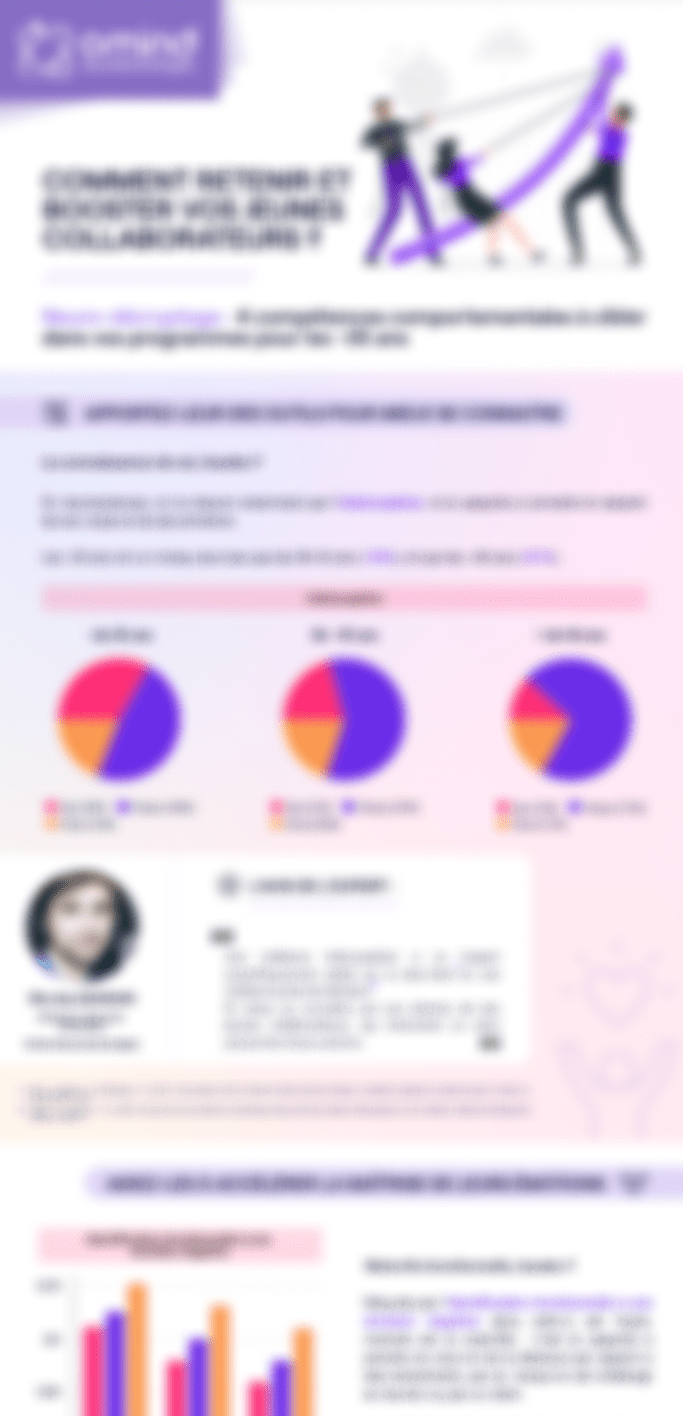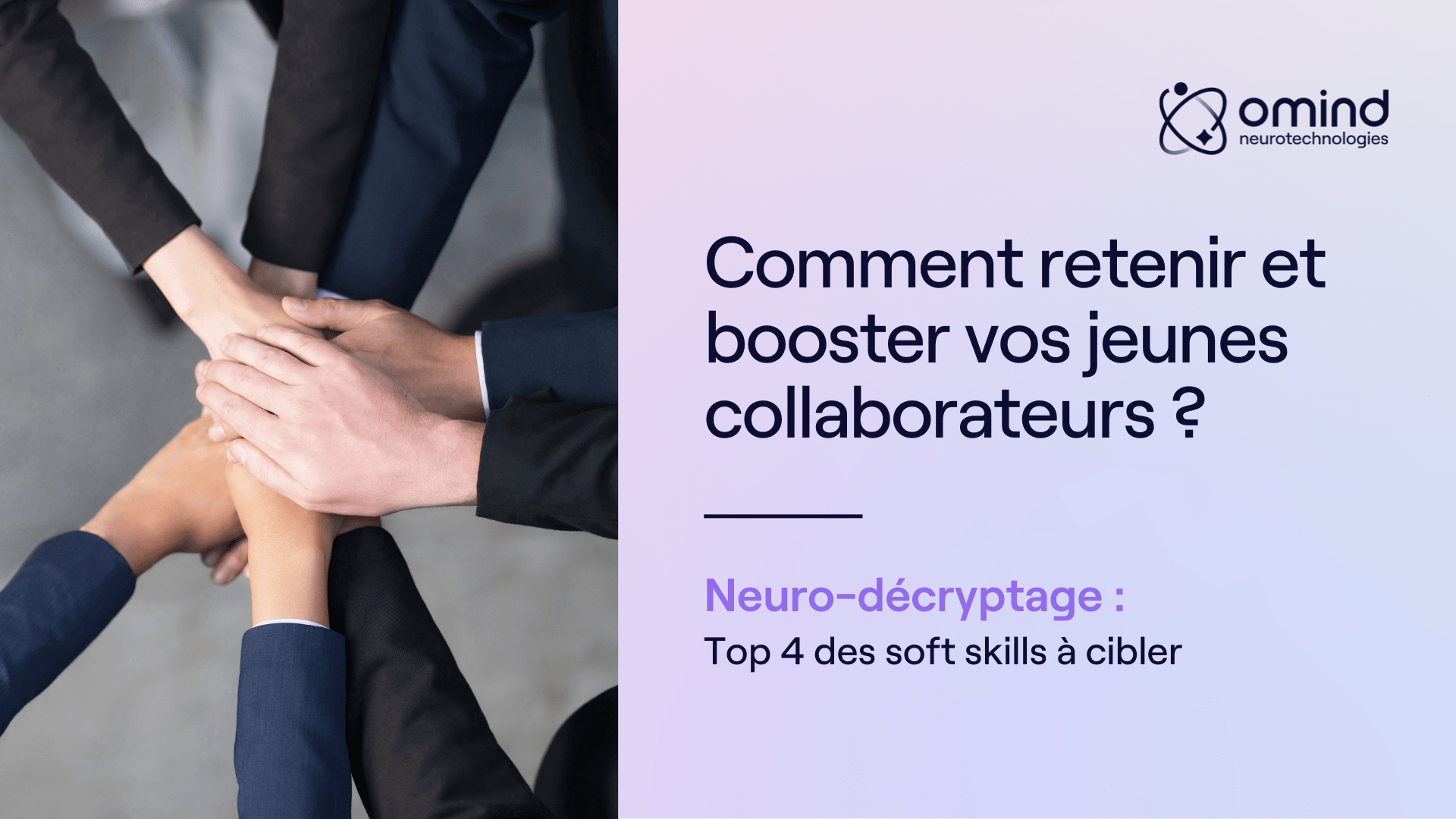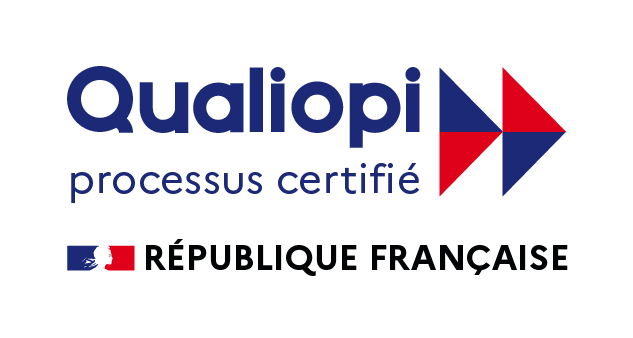The health crisis has led to a historically high number of resignations in France. More than 520,000 RESIGNATIONS ¹ per quarter in 2022 (+17% on 2019). A phenomenon that particularly affects younger employees: 42% OF UNDER-35S are considering leaving their jobs²(OpinionWay survey for Indeed). Driven by new priorities, talented people are looking for a balance between their professional and personal lives, more flexible working conditions, a sense of meaning in their missions…
So how can we retain these young talents and make them the driving force behind the company in this uncertain and changing context? We’ve analyzed the data from our customers’ virtual reality and online experiences. Discover in this infographic the 4 KEY BEHAVIORAL COMPETENCIES to target in your under-35s, and how to develop them ⬇
DOWNLOAD THE INFOGRAPHIC ON THE SKILLS OF YOUNG EMPLOYEES

DO YOUR YOUNG EMPLOYEES REALLY KNOW EACH OTHER?
SELF-KNOWLEDGE is an essential factor in reconciling well-being and performance at work. It can be defined as the knowledge that an individual acquires about himself throughout his life, through his various experiences.
Good self-knowledge enables everyone to be more confident, agile, creative and sociable. It’s the foundation of every other skill needed to develop human potential.
But then, do young talents really know each other? According to our data, under-35s have a lower level of interception* than 36-45s (-12%), and the +46 age group (-21%).
Interception

In neuroscience, self-awareness is measured by INTEROCEPTIONthe ability to know how one’s body and emotions feel.
Improved interception has a scientifically validated impact on WELL-BEING³ and better DECISION-MAKING⁴. And knowing oneself better is a key expectation of young employees, who are looking for personal meaning in their actions.
KEY SKILLS TO TARGET IN YOUR PROGRAMS FOR UNDER-35S

Bonus: A few tips for upskilling your young talent
- INNOVATE YOUR DEVELOPMENT PROGRAMS: Set up engaging, fun training courses that will enable your talents to work on their soft skills while having fun and anchoring these behaviors in their daily lives. Example: an Omind training course combining neuroscience and virtual reality. + MORE THAN 8/10 LEARNERSand MULTIPLIES BY 3 THE KING of soft skills training.
- TEACH THEM TO ASSERT THEMSELVES The aim is to help them build their self-confidence through small group exercises. They take it in turns to take the floor and come up with a number of ideas on a variety of subjects, all the while having to convince their peers of their position. The aim: to get them out of their comfort zone, so that they learn to assert themselves and become leaders in the face of uncertainty and change.
- TRAINING FUTURE ‘MANAGERS – COACHES’ : your young employees are increasingly looking for close, inspiring and human management. This type of leadership fosters secure, engaging environments in which young employees feel confident and entitled to express their own ideas. 72 % of companies that have used manager-coaches to develop their teams’ potential have seen a clear improvement in their skills (ICF 2020 study).

Omind Neurotechnologies helps your young talents better understand their cognitive and emotional mechanisms to develop their leadership skills, teach them to assert themselves, innovate, dare… Key behaviors to make them ACTORS OF CHANGE in your company.
¹ https://dares.travail-emploi.gouv.fr/publication/la-france-vit-elle-une-grande-demission
² OpinionWay study for Indeed conducted between April and May 2022
³ Kirk, U., Downar, J., & Montague, P. R. (2011). Interoception drives increased rational decision-making in meditators playing the ultimatum game. Frontiers in neuroscience, 5, 49.
⁴ Kiaei, Y. A., & Reio Jr, T. G. (2014). Goal pursuit and eudaimonic well-being among university students: Metacognition as the mediator. Behavioral development bulletin, 19(4), 91.

